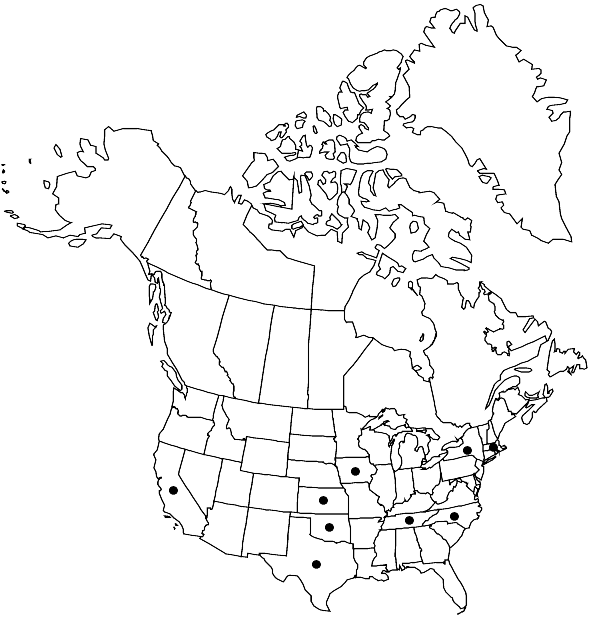Difference between revisions of "Acaulon muticum var. muticum"
FNA>Volume Importer |
imported>Volume Importer |
||
| (One intermediate revision by the same user not shown) | |||
| Line 42: | Line 42: | ||
|publication year= | |publication year= | ||
|special status= | |special status= | ||
| − | |source xml=https:// | + | |source xml=https://bitbucket.org/aafc-mbb/fna-data-curation/src/2e0870ddd59836b60bcf96646a41e87ea5a5943a/coarse_grained_fna_xml/V27/V27_943.xml |
|subfamily=Pottiaceae subfam. Pottioideae | |subfamily=Pottiaceae subfam. Pottioideae | ||
|genus=Acaulon | |genus=Acaulon | ||
Latest revision as of 21:29, 5 November 2020
Plants yellow-brown in nature. Spores densely low spiculose-papillose.
Phenology: Capsules mature late fall to spring.
Habitat: Soil, among grasses, pastures
Elevation: low to moderate elevations
Distribution

Calif., Iowa, Kans., Mass., N.Y., N.C., Okla., Tenn., Tex., Europe, Asia, Africa.
Discussion
It may be suspected that young plants of both var. muticum and var. rufescens sometimes have smooth, somewhat elliptic spores. A collection from Texas (Bastrop County, Bastrop, F. McAllister, Feb. 1934, A. J. Grout, North American Musci Perfecti 258, UBC) has spheric, heavily papillose spores, 40–45 µm. Specimens with partially smooth spores but a few large granules adherent or scattered through the spore sac (e.g., Oregon, Lane County, Eugene, Alton Baker Park, D. Wagner 1834, Mar. 9, 1978, UBC) are here placed tentatively with the typical variety. A specimen from Iowa (Poweshiek County, Conard & Peck v.11.35, MO) has leaves blotched red in KOH and, variably among capsules, weakly papillose to distinctly crowded-spiculose spores.
Selected References
None.